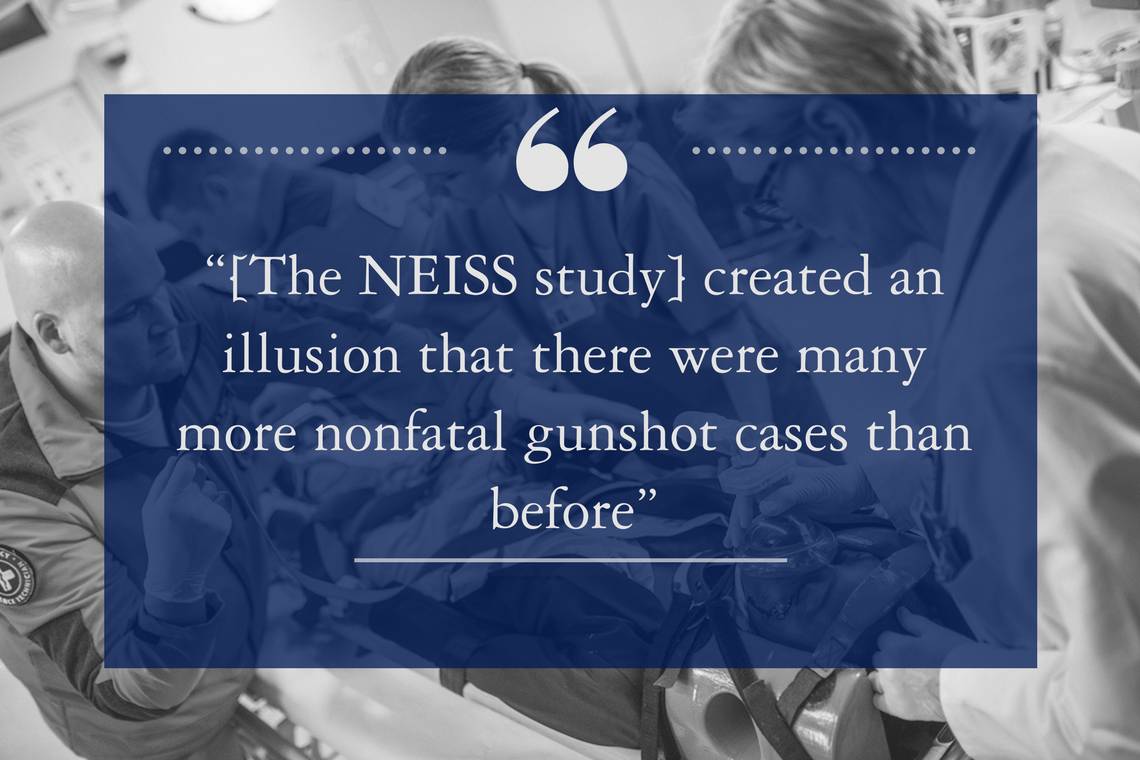Study Debunks Claim of Greatly Improved Survival Rate for Gunshot Victims
Data errors led to appearance that fewer were dying

The survival rate of U.S. gunshot victims has not shown a marked improvement, as other recent studies have suggested, according to new research from Duke University and the University of California, Davis.
The purported increase in survival rate had been credited to improvements in emergency treatment and medical care of critically injured patients. But on close analysis, researchers found problems in the way data was collected and coded.
“Our analysis shows that neither the estimate of nonfatal shootings nor the fatality rate changed much in the decade after 2003,” said Philip Cook, ITT/Terry Sanford Professor at the Sanford School of Public Policy.
Cook is lead author of the study published online June 22 in the American Journal of Public Health.
The researchers analyzed statistics from 2003 to 2012 from the National Electronic Injury Surveillance System (NEISS)-All Injury Program and from the more detailed NEISS Firearms Injury Surveillance Study. The data comes from a sample of approximately 90 hospitals with six or more beds that provide 24-hour emergency care. It is then extrapolated to produce an annual estimate of the number of gun assault injuries.
The number of gun homicides is an actual count -- not an estimate -- from the Centers for Disease Control.
During the 10-year period, some hospitals withdrew from the NEISS survey and were, in two cases, replaced by hospitals that “implausibly reported orders of magnitude more gunshot cases,” the authors wrote.
The researchers also found a large decline in the number of gun assault cases classified as injuries of “unknown” cause and a large increase in gun assaults being correctly classified.
“As a result, it created an illusion that there were many more nonfatal gunshot cases than before,” Cook said.
Previous analyses had interpreted the NEISS data to mean nonfatal assaults had increased 49 percent from 2003 to 2012 while the gun homicide count stayed steady. This suggested many fewer gunshot victims were dying and led to a presumed drop in the fatality rate from 25 percent to 18 percent.
After adjusting for the data reporting problems, the purported increase in nonfatal gun assaults disappeared. The adjusted estimate of nonfatal cases was 41,874 in 2003 and 41,996 in 2012, while homicides numbered 11,920 in 2003 and 11,622 in 2012. The fatality rate held steady at 22 percent.
Given that the U.S. population increased by 8.3 percent during the decade, from 290 million to 314 million, the population-adjusted rate at which Americans were shot actually declined, Cook noted. It dropped from 18.54 per 100,000 Americans to 17.07 per 100,000 Americans, a decline of 7.9 percent. That trend has reversed in the last few years.
Study co-author Garen Wintemute, a practicing emergency physician, professor of emergency medicine at UC-Davis, and director of the Violence Prevention Research Program there, said he questioned the previous interpretation of the NEISS data because it did not match other sources or the experiences of trauma centers.
“The idea that there was a sharp reduction in the death rate failed a basic test of plausibility,” Wintemute said. “Absolutely, there have been major improvements in emergency medical care and delivery, but they have taken place over decades. In the short run, they simply could not account for the large change.
“In addition, reports from individual hospitals have shown fatality rates increasing, not decreasing. The on-the-ground experience conflicted with what the administrative data showed.”
Cook added that understanding trends in gun violence is challenging because consistent, accurate data is hard to come by. Despite difficulties with the NEISS, it is important because “it is the only national estimate of injury we have.”
###
CITATION: “Constant Lethality of Gunshot Injuries From Firearm Assault: United States, 2003-2012,” Philip J. Cook, Ariadne E. Rivera-Aguirre, Magdelena Cerdá and Garen Wintemute. American Journal of Public Health, June 22, 2017: e1-e5. DOI: 10.2105/AJPH.2017.303837.
The research was supported by National Institute on Drug Abuse grant #R21DA041154.